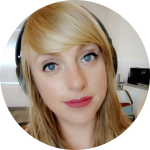The Playa Queen (PQ) was one of 24 projects that were part of the regional CORE effigies at Burning Man 2013. Designed as a tribute to the many working-river boats that made Sacramento what it is today, it was my pleasure to be included in this project. Originally I asked if they needed any help with the lighting or any other technical issues and ended up jumping in where I could to help finish construction. After the technical lead had a last minute gig come up that would take him out of town for two months, I was more than happy to step up to fill the position. The former technical lead and I went over his plans as I scribed down his suggestions in my notebook. I created a bill of material (BOM) from his recommendations and calculated its power requirements. Each of the regional CORE effigies will be supplied with 400 Watts of 120V AC power. This first drafts power requirements were 770 Watts, mainly due to inefficient power supplies. After a few tweaks that included changing LEDs to electro-luminescent wire and finding better power supplies I was able to get the total power required to 390 Watts. To go an even further step I then sourced all of the parts from China and was able to reduce the bill by $300.
